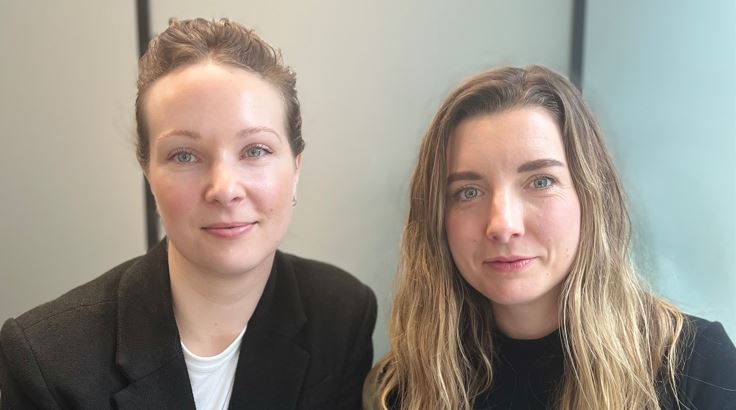Alex Pacey is PHD’s Chief Product Officer; in this article, he aims to make the buzz and vagueness around the power of attention more tangible by posing four key questions to gauge accurate understanding.
Many column inches in our industry have been dedicated to the subject of Attention, the importance of it to your business as a marketer and mine as an agency leader.
But as with so many of the new shiny toys we’re presented with, the danger is that we leap in with both feet and fall short because we fail to make the learning tangible.
Unfortunately, in the media industry, we seem to overvalue the importance of being first and undervalue the importance of being right. Any new information and finding are only as useful as it is useable.
So, as I picture you sat at your screen taking the time to read this, I thought I’d do my best to give tangible advice to marketers about attention and, more specifically, some direct questions to ask your partners.
Here are my top 4:
What is your partner’s ambition for Attention?
Attention is a developing area, and it will change and evolve. Ask your partner their ambition for attention; the answer will reveal their genuine understanding and intent for this subject. A couple of watch outs here.
The reach versus attention debate. This is not a debate; it’s not even a thing. Reach, and attention are intrinsically linked. You must provide an opportunity to see before you can measure attention. Attention is a measure of effective reach. To say “we’re no longer interested in reach” is to misunderstand media’s and attention’s fundamental building blocks.
The horizon of your partner’s ambition. We are just starting to scratch the surface of our understanding of attention and how it relates to media. Firstly, only a small portion of Australian media has been measured. Secondly, and vitally, the current focus has been squarely on ‘Active Attention’ (more on this later) without any real narrative on the power of Passive Attention.
With that in mind, I would be looking for any partner to acknowledge that we need to test and learn now but also have one eye on future applications as the research and knowledge in the space is updated.
How does the inclusion of Attention influence how you service my business?
As part of a recent panel debate on Attention hosted by Powered by Nine, Ben Cunnington, Head of Media at Cars 24, said, “I always ask my agencies…how will this affect someone buying a TV spot tomorrow?”. The truth is the coal face impact on TV buying is reliant upon a radical change in how TV is bought and sold; however, the main intent of the question remains, and it’s a valuable one to pose to your partners – attention sounds great, but how does it change what you do for me day to day?
In reality, Attention measurement is still a proxy, albeit a valuable one, for real cause and effect metrics. If you have MMM or brand uplift results, then this should remain your gold standard. But as a measure of the effectiveness of your reach, attention has value, so how is your partner using the data? The first, most obvious answer is to help optimise planned investment against channels, but a metric with the value of attention should be influencing far more.
We at PHD use our bespoke comms models – our Role for Comms – to identify the right type and a minimum number of attentive seconds required depending upon the job to be done against a particular audience and stage of the consumer journey. Attention needs to help dictate channel selection, not merely investment.
In this way, an agency can ensure that attention has a real-world effect on what goes into the market on behalf of your brand instead of waiting for media vendors to trade against an Attention metric.
What role do you see Passive Attention playing now or in the future as measurement broadens?
As noted above, we’ve only begun on the road to a fundamental understanding of the nature of Attention. Amplified Intelligence measures three types, Active, Passive and Non – Attention. The primary focus thus far has been on measuring and benchmarking Active Attention, and the ensuing talk of optimisation has almost exclusively focussed here. However, this belies what we know about how advertising is decoded by the human brain and the nature of how we interact with brands.
The part of the brain that drives focused attention (Parietal Cortex) is different to that that controls long-term memory (Hippocampus). Whilst we don’t yet know the role that Active vs Passive attention plays here, it’s a fair hypothesis that we can expect future research findings to investigate the role that Passive Attention plays in long-term memory and brand association.
Also, let’s not forget that a good portion of the media yet to be measured by Amplified Intelligence will reveal a strength in Passive Attention – Out of Home and Radio spring to mind immediately.
Your partner demonstrating an understanding of this area and how it influences their models and decision-making is a real indication of their smarts where Attention is concerned.
Based on what you’ve learned about Attention, is there anything you think I should reconsider as a marketer and brand custodian?
One of the more significant revelations of Karen Nelson-Field and the Amplified Intelligences research is her findings about the hierarchy of what drives Attention, with media and format being the top two and creative relegated to fourth.
This puts even more focus on you and your partners to deliver the proper context and environment for your message.
Hasn’t this always been the case? Yes, but it’s also the case that the relatively modern phenomenon of highly personalised targeting has across the board diminished the focus on context.
This, combined with the ongoing need to drive down costs from a procurement and audit perspective, would provoke me to ask – with what we now know about what drives attention, to what degree are we prepared to pay for quality?
But ask your partners; they might have a different view.
Whilst the conceit of this article is questions you might pose to your partners; it’s worth acknowledging that any success or failure in the area of attention will be a collective one. It seems embarrassingly self-evident but wanting potential consumers to pay attention to your advertising message is fundamental to everyone involved in the process.
To that end, throughout this article, I intentionally replaced the word ‘agency’ with the word ‘partner’. In times of change and development, the strength of collective knowledge and understanding should be leveraged to the best effect.



